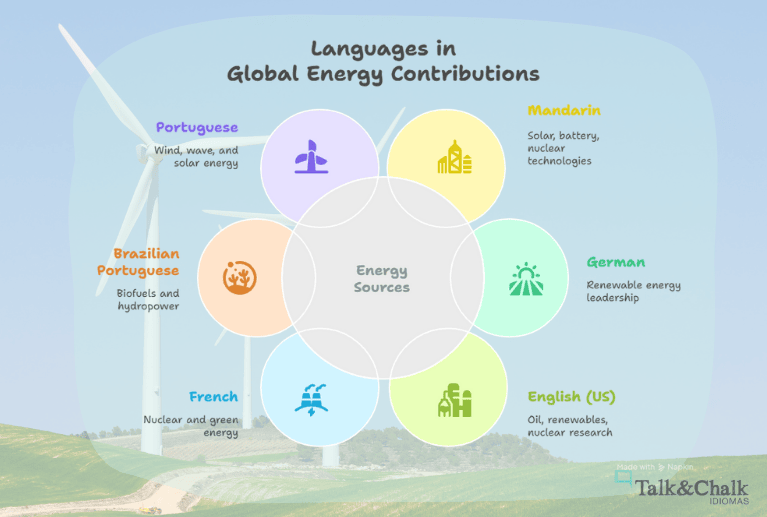It plays a pivotal role not only in powering economies but also in shaping climate strategies, driving sustainable innovation, and ensuring global stability. From the rise of green hydrogen and offshore wind farms to debates over nuclear safety and energy equity, this industry is evolving rapidly — and it speaks many languages. Languages in Global Energy
Mastering specific languages in this field is far more than a communication skill — it’s a strategic advantage. Language fluency gives professionals access to top-tier research institutions, influential energy forums like COP and IEA, policy dialogues shaping the energy transition, and collaborations with global leaders such as Siemens Energy (Germany), TotalEnergies (France), Petrobras (Brazil), and State Grid Corporation (China). Whether you’re analyzing carbon markets, managing international projects, or negotiating sustainability targets, the ability to communicate across borders makes you part of the solution.
In today’s interconnected world, those who speak the languages of energy — both literally and technically — are the ones helping fuel the planet’s transformation toward a cleaner, more resilient future.
Key languages and their energy focus:
English (US) – Oil, nuclear research, and renewables.
German – Leadership in renewable energy and green transition.
French – Nuclear energy expertise and green energy investments.
Mandarin – Advances in solar, battery, and nuclear technologies.
Brazilian Portuguese – Biofuels and hydropower in Latin America.
Portuguese – Wind, wave, and solar energy in Lusophone nations.
⚡ Language is a tool of influence, allowing professionals to collaborate on clean energy, innovation, and climate policy worldwide.


